Sarah Zama's Blog, page 51
June 26, 2017
The Golden Hour – What Good WWI Gave to Us
I’m very excited to host author Jeffrey K. Walker today. You might have read the excerpt of his book, None of Us the Same, that I posted recently. It’s the first novel in a trilogy that revolves around WWI and in this first book, Jeffrey explores how war affects the people who expereinced it, even many years after the event.
Jeffrey researched this book extencively before writing it, it is quite apparent. I was particularly impressed by the vivid rendition of the firld hospital, which really came to life, for me, in the experience of one of the main characters, Deirdre Brannigan.
A couple of years ago, I helped in the editing of a book by an Italian medical officer who had beed in Afghanistan for many months. Something he said really stuck me: he wrote that many people ask him how he could be a soldir and a doctor at the same time. He said where there is suffering, ther will be doctors, and people often don’t realised that wars actually advance medicin more than we normally think. Horrible as wars are, very often they bring good in the field of medicine.
So I asked Jeffrey if he could expande on this idea, since it was cleare he knows a great deal of this. This article is the result. I hope you’ll enjoy it as much I did.
——————————————————————————–
Worl War I: a pivotal moment in contemporary history
I’ve been immersed in the First World War and the 1920s for the last year or so. Seems I decided in a delusional moment to write a historical fiction trilogy set 1914-1926, by way of explanation.
Let me say upfront, I totally dig this period. This was the moment when the enormous promise of modernity—industrialization, scientific advancement, unimaginable new technologies—crashed head-on into the worst characteristics of the human race. What people soon discovered was that if we could mass produce Model T Fords and Edison light bulbs, we could just as easily mass produce mountains of bombs and machine guns. The First World War became an assembly line of death and destruction.
Of course, the 1920s as we’ve come to know them could not have happened without passing through the crucible of the First World War. It took the horrendous horror of that 51-month conflict to strip away allegiances to old notions of rectitude and propriety. Into that vacuum rushed jazz and sexual freedom and the avant-garde.
So the First World War, awful as it was, produced unforeseen positive results, too. One of these serendipitous results was a huge leap forward in medical science.
The Golden Hour and the concept of moderm first aid medication
Before the First World War, more soldiers died of diseases and from secondary infections from their wounds than from the direct destructive effects of battle. Although some halting progress was made during the Crimean War (most famously by Florence Nightingale) and by both armies during the American Civil War, military medicine prior to the First World War had been very hit-or-miss… and mostly miss. Part of this was due to a lack of medical knowledge and resources; most was due to a lack of logistics and attention.
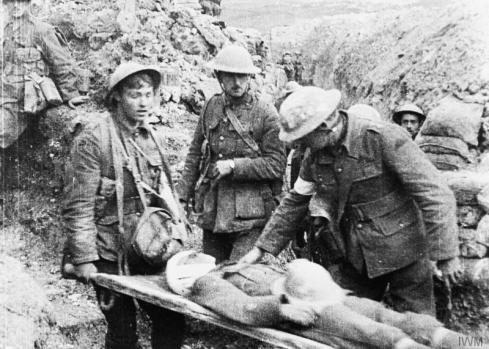 Quite early in the First World War, led by the example of the French, the combatant armies developed fairly elaborate systems for getting wounded soldiers off the battlefield and back to some kind of medical facility. The British and French adopted a four-tiered system, beginning in the trenches with battalion-level first aid stations manned by regimental surgeons. They in turn moved wounded men back to Casualty Clearing Stations, the name the British adopted for what we would know today as field hospitals. (Perhaps the most famous of these is the fictional Korean War-era 4077th Mobile Army Surgical Hospital, made famous by the book, movie and television series, M*A*S*H.) These facilities were equipped for surgery and for evacuation. The CCS would then push as many wounded as they could stabilize back to the big Base Hospitals which for the British were clustered around the Channel ports. From there, wounded soldiers requiring ongoing treatment, extended convalescence or discharge from active service were shunted back to an elaborate network of hospitals in the UK.
Quite early in the First World War, led by the example of the French, the combatant armies developed fairly elaborate systems for getting wounded soldiers off the battlefield and back to some kind of medical facility. The British and French adopted a four-tiered system, beginning in the trenches with battalion-level first aid stations manned by regimental surgeons. They in turn moved wounded men back to Casualty Clearing Stations, the name the British adopted for what we would know today as field hospitals. (Perhaps the most famous of these is the fictional Korean War-era 4077th Mobile Army Surgical Hospital, made famous by the book, movie and television series, M*A*S*H.) These facilities were equipped for surgery and for evacuation. The CCS would then push as many wounded as they could stabilize back to the big Base Hospitals which for the British were clustered around the Channel ports. From there, wounded soldiers requiring ongoing treatment, extended convalescence or discharge from active service were shunted back to an elaborate network of hospitals in the UK.
At each stage of this system, doctors and nurses applied a rigorous—and sometimes seemingly heartless—system of triage. The overwhelming crush of casualties that came in the wake of the big battles led the French to adopt a three-level system of sorting the wounded: those who could be treated in place, those who could be stabilized and moved onward, and those who were beyond saving and could only be made comfortable while they died.
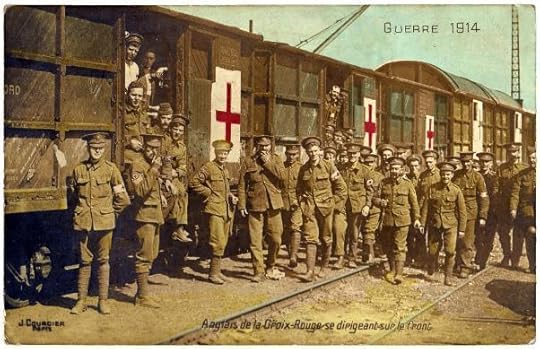
This whole system was held together by dedicated medical transportation: stretcher bearers—often regimental musicians—to remove the wounded from the battlefield to the first aid stations; ambulances—often driven by women—to move the wounded from the first aid stations to the CCS; medical trains and canal boats to move patients from the CCS to the Base Hospitals; and hospital ships to move the convalescent soldiers home to Blighty, as England was known to the Tommies (British soldiers). Although this system often broke down and was inevitably insufficient in the face of huge casualties from the big land offensives, it worked surprisingly well throughout the War, saving countless lives.
Before #WWI, more soldiers died of diseases than from their wounds #history
Click To Tweet
Twenty years later, the concept of the “Golden Hour” was conceived—the all-important first hour after a traumatic injury during which an injured person must be gotten medical care—and became ingrained in both emergency civilian and military battlefield medicine. This notion was developed by American trauma surgeons from the extensive data collected by the French Army during the First World War that showed a wounded solider’s chance of survival was much greater if treated within the first hour of injury.
anesthesia and plastic surgery: how WWI advanced medicin after the trauma
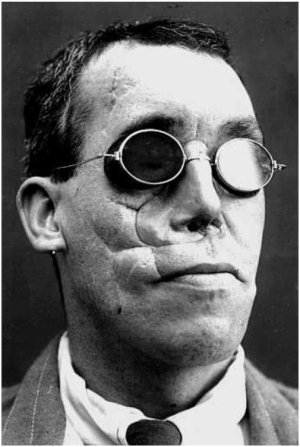 The industrial scale of violence in the War, coupled with the modernized system of medical treatment and evacuation, led to a string of new challenges and solutions. For example, the enormous destructive power of massed artillery firing huge high explosive shells by the thousands resulted in awful wounds from shrapnel. That the medical system could get to these men before they bled out or died from shock on the battlefield led to the problem of how to treat these awful and gaping wounds. The War was fought less than a generation before the antibiotic drug revolution, so infection was an enormous problem. Some of this was alleviated by the new understanding of the importance of antisepsis, particularly in surgery, and the widespread availability of anesthesia to allow for complex surgeries. With microbe-ridden soil often embedded in wounds by shell blasts, gangrene was a persistent horror, but antiseptic and unhurried surgery allowed reasonably safe amputations that most men survived.
The industrial scale of violence in the War, coupled with the modernized system of medical treatment and evacuation, led to a string of new challenges and solutions. For example, the enormous destructive power of massed artillery firing huge high explosive shells by the thousands resulted in awful wounds from shrapnel. That the medical system could get to these men before they bled out or died from shock on the battlefield led to the problem of how to treat these awful and gaping wounds. The War was fought less than a generation before the antibiotic drug revolution, so infection was an enormous problem. Some of this was alleviated by the new understanding of the importance of antisepsis, particularly in surgery, and the widespread availability of anesthesia to allow for complex surgeries. With microbe-ridden soil often embedded in wounds by shell blasts, gangrene was a persistent horror, but antiseptic and unhurried surgery allowed reasonably safe amputations that most men survived.
The War also saw tens of thousands of men surviving terrible facial wounds from machine gun and rifle bullets that left them horribly disfigured, unable to eat or breathe properly, or with painful scar tissue. This led to great innovations and advancements in what became known as “plastic surgery.” Spearheaded by a New Zealand surgeon, Harold Gillies, a special hospital for reconstructive surgery was established in Cambridgeshire, where Gillies and his surgical teams performed over 11,000 procedures on soldiers with facial gunshot wounds. The techniques they developed to return disfigured soldiers to something like a normal life provided the basis for cosmetic surgery as we know it today.
Shell Shock: how WWI faced PTSD decades before it became a recognised condition
The First World War was also the first conflict in which medical experts recognized and struggled to develop effective treatments to deal with the intense psychological trauma induced by trench warfare. The omnipresence of random death, the percussive effects of sustained artillery barrages, and the subhuman conditions in the trenches all contributed to a wide-spread neurasthenia among enlisted soldiers and officers alike. The colloquial term for this condition was “shell shock” and would be a defining characteristic of the War.
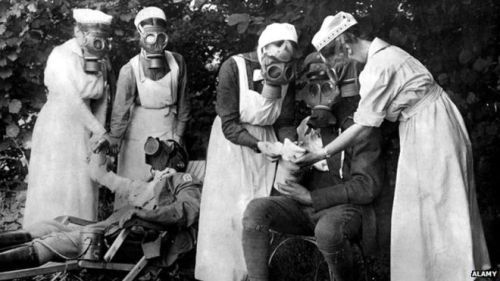 Almost sixty years before “post-traumatic stress disorder” was officially accepted by the psychiatric profession as a diagnosable mental disorder, doctors struggled to treat an often debilitating—and sometimes permanent—condition that may have affected as many as 25% of the soldiers who took the field during the War. The British made some advances, most notably the specialized hospital established for treating shell shocked officers at Craiglockhart, just outside Edinburgh. There was, however, a significant division between the treatment of officers and enlisted men. Generally, a shell shocked officer was considered a gentleman who was simply overtaxed by his duties, exhausted, in need of rest and exercise away from the fighting. Enlisted troops, on the other hand, were considered slackers or, worse yet, cowards. Rather than being allowed convalescent leave or given the more humane medical care afforded officers, the treatment was often military discipline, including courts-martial for cowardice or desertion. By the Second World War, treatment had become more regularized and the condition more widely accepted as a medical disorder rather than a moral failing. Still, as in the famous case of General George Patton slapping a “battle fatigued” soldier, less enlightened attitudes persisted right through to the Vietnam War.
Almost sixty years before “post-traumatic stress disorder” was officially accepted by the psychiatric profession as a diagnosable mental disorder, doctors struggled to treat an often debilitating—and sometimes permanent—condition that may have affected as many as 25% of the soldiers who took the field during the War. The British made some advances, most notably the specialized hospital established for treating shell shocked officers at Craiglockhart, just outside Edinburgh. There was, however, a significant division between the treatment of officers and enlisted men. Generally, a shell shocked officer was considered a gentleman who was simply overtaxed by his duties, exhausted, in need of rest and exercise away from the fighting. Enlisted troops, on the other hand, were considered slackers or, worse yet, cowards. Rather than being allowed convalescent leave or given the more humane medical care afforded officers, the treatment was often military discipline, including courts-martial for cowardice or desertion. By the Second World War, treatment had become more regularized and the condition more widely accepted as a medical disorder rather than a moral failing. Still, as in the famous case of General George Patton slapping a “battle fatigued” soldier, less enlightened attitudes persisted right through to the Vietnam War.
During #WWI PTSD was first treated as a condition #history of #medicine
Click To Tweet
There were many other areas where medical science made leaps forward during the War: gas masks to protect against the new chemical weapons, blood banks and new methods of transfusion, skin grafting to treat burns, custom-fitted prosthetic limbs. The list could go on for pages. The lesson being, I suppose, that even out of catastrophic suffering some good can come. This may be one of the more important legacies of the First World War.
————————————————————————–
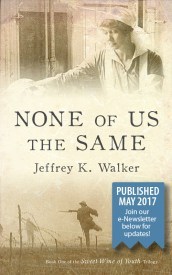
NONE OF US THE SAME
Fiery Deirdre Brannigan had opinions on everything. She certainly hated the very idea of war in 1914. Childhood pals Jack Oakley and Will Parsons thought it a grand adventure with their friends. But the crushing weight of her guilty conscience pushes Deirdre to leave Ireland and land directly in the fray. Meanwhile the five friends from Newfoundland blithely enlist. After all, the war couldn’t possibly last very long…
Amazon | Barnes&Nobles
—————————————————————————–

Jeffrey K. Walker
Jeffrey was raised in a dying one-industry town smack in the middle of Flyover Country. He checked out every book in his public library about anywhere other than there. For college, he fled as a refugee to New Orleans then spent his junior year in Scotland, where he learned to drink stout and met his wife.
Father of three children, sticking to a job proved to be a chalelnge. He caromed from stockbroker to bomber navigator to attorney to international consultant to law professor, picking up an assortment of degrees from Syracuse, Georgetown and Harvard along the way. He’s lived in three foreign countries, been to another 70, and still feels he hasn’t seen much.
He’s writing a trilogy set around the First World War and percolating another seven or eight novels and a dozen short stories. He lives in Virginia with his wife where he does a little teaching and law on the side.
CONNECT WITH JEFFREY
Facebook | Twitter | Goodreads
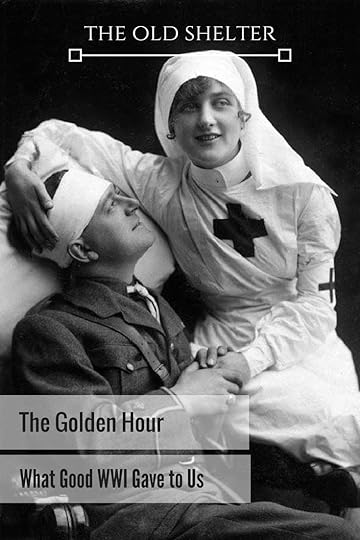
The post The Golden Hour – What Good WWI Gave to Us appeared first on The Old Shelter.
June 22, 2017
Thursday Quotables – The Blogchatter EBook Carnival
 Special edition of the Thursday Quotables today!
Special edition of the Thursday Quotables today!
Blogchatter is a community of bloggers I met during the AtoZ Challenge. They are very much active in supporting authors, especially in encouraging writers to publish their work and then supporting them after the book is published.
They do this through a variety of initiative, one of which is the Blogchatter EBook Carneval, which takes place after the AtoZ Challenge. Bloggers are encouraged to published their challenge as an ebook, they get published at the same time and listed on the Carnival page, where they can be downloaded for free. Writers taking part in the EBook Carnival are encouraged to review at least three of their fellow writers books, and so here I am, paying it forward.
Do visit the Blogchatter blog. They’re an amazing community and so welcoming and active. You’ll enjoy it.
THE FRAGRANCE OF TRUE LOVE
That day the very silent and firm Meer had taken her to the temple on the outskirts of the small town they studied in and there they stood in front of the giant statue of Lord Shiva in the secluded premises.
There was no one there and amidst jaw-dropping pin-drop silence, he had placed one hand on his chest and the other on Priyam’s head and with evident sincerity prayed as if making some deep vows for a few minutes and as he did so, tears rolled down his eyes. Priyam stood there staring her him with moist eyes and even more moist heart. Her heart went out to him as his integrity, dedication, pain and infinite love all oozed out of his eyes simultaneously.
Looking at her firmly he only said “Here, today we unite our souls forever,’ to which she slightly nodded.
The Fragrance of True Love by Roma Gupta Sinha is a sweet love story set in modern day India. True, it isn’t my usual fare of stories, but I enjoyed reading of this far away country seen from the eyes of its younger generation.
It’s the story of a union made in heaven, opposed by education paths, but helped by technology. A life where aspirations may require big sacrifices, but also where hard work rewards. And through it all is the guidance of love, the ultimate goal.
It’s a quick, heartwarming read.
The @blogchatter Ebook Carnival #free #ebooks Grab them. Review them!
Click To Tweet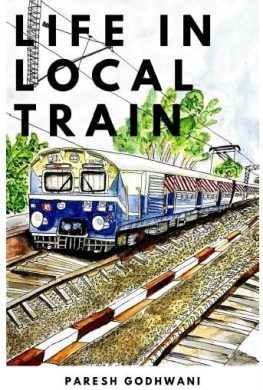 LIFE IN LOCAL TRAIN
LIFE IN LOCAL TRAIN
Life in Local Train by Paresh Godhwani is the account of the year and a half the author sped commuting for work on a local line in India. Maybe because I’m a commuter too, I felt for this guy, whose experience in India is very different from mine in Italy, but still, in a way, is very much the same. The constant tyranny of time and schedule, the delays of trains, which means a total reorganization and often a waste of time. Struggling with finding the best solution, getting angry at the unilateral changes. Bonding up with fellow commuters, finding a routine.
Commuting is a big investment of time and energy, and you have to find a way to cope with it. Paresh seems to have found many crafty ways to cope.
I also enjoyed very much the possibility to see a picture of modern India, which transpired in so many episodes. This is an account of true life, and I really appreciated that.
 WRITING TOOLS: 26 TIPS ON HOW TO IMPROVE YOUR WRITING
WRITING TOOLS: 26 TIPS ON HOW TO IMPROVE YOUR WRITINGWriting Tools, 26 Tips on How to Improve Your Writing by Cheryl Sterling is a quick guide for the modern writer. The title may be a bit deceptive, since the guide doesn’t just cover ways to improve our writing. A good part of the book is devoted to how to promote your writing too. But as the author points out, in today publishing world, an author must be a master of the storytelling craft and be adequately apt at promoting their own work too.
Clearly intended for the newbee more than the veteran author, this is a short book, but packed of into. And it’s true, it might be a bit essential, since the space didn’t allow to get too much into details, but there’s a lot of introduction, so that we know what’s out there, what are the possibilities, and we can start to explore from here. But you will also find actual directions, especially in a few of the sections. I particularly liked the one about the hero journey, which gets in great details and helps shape the structure of a story from scratches.
A fun, quick guide to keep at hand.
 HELLO DESSERT
HELLO DESSERTSo fine, now I have to confess that I love cooking and I’m particularly partial to desserts. No surprise that I love Hello Dessert by Tina Basu. This is a collection of very easy desserts that can be backed and cooked with what you have in the kitchen. No fancy ingredients or tools are needed.
Easy to follow directions, pictures to help you imagine how to serve it, this is a quick guide, since all the recipes are simple… but they look so tasty. I’ll tell you the truth, I’m going to try all of these desserts!
—————————————————
In post is part of the Thursday Quotables meme. If you want to discover more about this meme and maybe take part in it, head over to Bookshelf Fantasies

The post Thursday Quotables – The Blogchatter EBook Carnival appeared first on The Old Shelter.
June 19, 2017
Happyness (Mahatma Gandhi)
–Mahatma Gandhi

The post Happyness (Mahatma Gandhi) appeared first on The Old Shelter.
June 15, 2017
Thursday Quotables – None of Us the Same
“We left poor Sandy in the shite grave on that fucking beach, Jack,” he cocked out. “And Toby…” He reached with his left hand to his cheek and lightly touch the scar.
Jack saw an opening. “Will, what happened to Toby?” Will’s head snapped up, his face wide-eyed, almost unrecognizable. Then he faded again, out across the water. There was a quick crack from the door, which neither Jack nor Will noticed.
“He wanted to jump the bags that first day on the Somme, wouldn’t be left back with the ten percent that time.” He stroke the scar with unbearable lightness. “We found a break in the wire and were holding it open for the men to get through, he and I.” Will stopped stroking the scar now, his head cocked on one side. “Then everything went topsy-turvy… And he was gone.”
Will looked down at his waistcoat and shirt. Dropped the Webley on the tabletop, and began to wipe at his clothing. He began lightly, like petting a cat, then harder and faster at his sleeves and shirt front. As he rubbed, his body began to shake. He looked up to Jack with wild pleading. “Get it off! Please God, get it off!”
There was a loud sob from behind and Jack turned to see Deirdre and Gussie in the doorway, the younger woman crying into an already soaked handkerchief. Dee had a look of astonishment Jack had never seen before. She walked forward, not taking her eyes form Will. Jack eased the gun from off the desk and slid it into the waistband of his trousers at the small of his back. Dee came to the desk and turned Will in the swivel chair until he faced her, still shaking and rubbing at his clothing. She knelt on the floor and took his hands, one at a time, into hers. She looked up at him with such compassion Jack could scarcely bear to watch her.
But she knew now. Will was the only other one in the room who might know, too. “It was you at the Casualty Clearing Station, wasn’t it? I remember you now.” Will stared back, eyes pleading for help. He wrenched his hands from Dee’s grasp and began rubbing furiously again. “You were cover in blood and… and… all manner of…” Her voice caught, daring no more details, for both their sake. “that was Toby, wasn’t it, Will?”
 I’ve read quite a few novels recently that in a way or another involve WWI and veterans from that war. None of Us the Same by Jaffrey Walker is the first one that truly rings authentic. It’s a very subtle line. It isn’t easy for me to say what it is that makes this story different, because also the other novels I’ve read were very well-researched. The different isn’t in the research itself, I believe, it’s more in the personal experience an author can put into their story.
I’ve read quite a few novels recently that in a way or another involve WWI and veterans from that war. None of Us the Same by Jaffrey Walker is the first one that truly rings authentic. It’s a very subtle line. It isn’t easy for me to say what it is that makes this story different, because also the other novels I’ve read were very well-researched. The different isn’t in the research itself, I believe, it’s more in the personal experience an author can put into their story.
Jeffrey is a veteran himself, and this shows in many places, especially in the long section about the actual war. There is something very ‘normal’ about his war scenes, if this makes any sense. While the other novels I’ve read gave out a strong sense of the tragedy WWI had been, Jeffrey’s WWI has a flavour of everyday life. This is how millions of men and women lived everyday during that time. Sure, there were the big battles, but there were also the little things of life happening in the trenches.
The war scene are my favourite. Of course they are very relevant on a narrative level, but they are also very important for connecting with these characters. And as I said, for me there was an extra level of authenticity to them.
The rest of the novel deals with what the war left attached to every one of these characters. Interesting as it was, it wasn’t as involving as the war scenes (this is probably quite natural), and it was also quite episodic. Every episode was good, it let me come very near to the characters and I felt for all of them, but it was kind of isolated. Not really a problem, but I wonder whether a more organic plot would have enhanced the sense of belonging even further.
It’s a good story, well researched, written with compassion and with relatable characters. I enjoyed it.
—————————————————
In post is part of the Thursday Quotables meme. If you want to discover more about this meme and maybe take part in it, head over to Bookshelf Fantasies

The post Thursday Quotables – None of Us the Same appeared first on The Old Shelter.
June 5, 2017
Gang Roundup – June 2017
Hi everyone. So how’s the chenging season agreeing with you? Very miserably with me. Here in Italy, we moved from a mild end of winter to a full fledged summer in a matter of a week. It’s horrible. But as we say in my parts, “Whether, luck and lords just do what they want” (it’s a dialect saying and it isn’t this polite, let me tell you). So let’s move on!
Enjoy!!!
And hey! If you happen to have writte a 1920s/dieselpunk related article and you’d like it to appear in the Gang Roundup, give me a nudge. I’ll include it in the next month round up.
The original It Girl
Of course It is one of the most iconic films of the 1920s. Of course Clara Bow is one of the most known and iconic women (but I’d say people) of the 1920s. And just let me tell you that It is, plain and simple, a good film even by today’s standards. What else do you need to go watch it??
As always, Carrie-Anne made a marvelous job of dissecting the film. Lots of info and anecdotes. I always enjoy her silent film critics for this very reason.
The sinking of Lusitania
The end of the liner Lusitania made up the stuff of legends, just like the end of the Titanic. But while the letter story is widely known, the sinking of the Lusitania during WWI is less so.
Although a civilia liner, the Lusitania took part to the war, shipping munitions and contraband destined for the British war effort. This was propably no secret for the German, that in 1915 decided to do something about it.
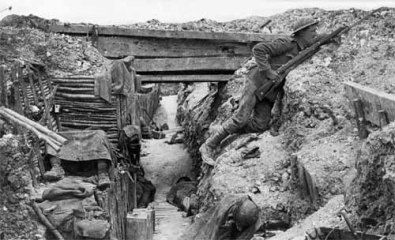 Over Where?
Over Where?Crazy as it might sound, WWI was a stepping point in the history of the Western World. It changed it greatly, in bad… and good.
Author Jeffrey Walker guides us through this seminal time of our history. He touches on many aspect of the War as an event and as a factor in people’s lives. He looks at the differences between the European and the American experience of the. He also looks at what advancements the War brought about to all the communities involved.
An article packed full of info.
Las Chicas del Cable – four women in 1920s Madrid
I stumbled upon the news of this new series really by mere chance. It’s a Netflix only production, so lucky you guys who have access to it.
It looks very intersting and quite different from the usual take on the Roaring Twenties. No surprise, since this is Spain, a very different historical context. But there are also many similarities, because flappers existed all over the world in the 1920s. Everywhere they pushed women’s awareness of their worth ahead. This is one of the very fascinating things about them.
Vampir auf der couch
And while we’re being international, let me present you a series I actually learned about last year. It’ss a Austrian historical commedy with more than a touch of horror. . Tobias Moretti looks like the perfect man for the part, if you ask me. He is a vampire. In 1930s Wien, he seeks Dr. Sigmund Freud’s help to fix his problematic 500.year-old marriage. Go figure!
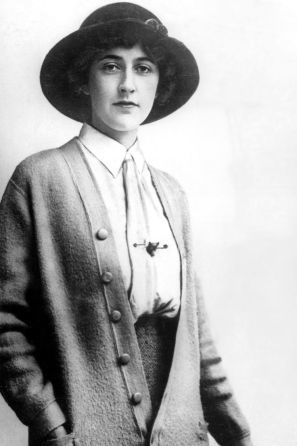
The mysterious disappearance of Agatha Christie
If you have any interest in mystery stories, you know Agatha Christie. You have probably read at least one of her books (I have – and I plan to read quite a few more). In 1926 she disappeared for 11 days and even when she was finally found, she was never able (or was she never willing?) to say what happened. She claimed she lost her memory and never in her life revealed what happened in those 11 days or her reasons to disappere.
Biographers have long tried to break the mystery, but so far, no one could. There are of course quite a few theories. In 1979 one of such theories became a film.
But I suppose that, as for other mysteries of the past, we’ll have to cope with never knowing the truth.
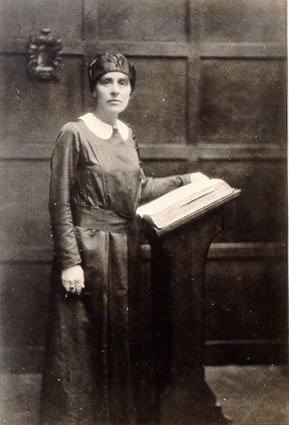 Sex in the Pulpit: The feminist preacher for Aussie flappers
Sex in the Pulpit: The feminist preacher for Aussie flappersAnd last month I learned about another remarkable lady.
Maude Royden “was the first woman to preach in an Anglican church in Australia when she addressed the Darling Point congregation in 1928. Not your average touring preacher, Royden smoked; she told girls to be more selfish. According to the Sydney Morning Herald, the crowd at her ‘Sex and Common-sense’ lecture ‘threatened to become unmanageable’ as police struggled to hold people back from the entrance.”
She addressed women emancipation from the most male-centre place of power, a church pulpit. She advocated women pleasure in sex and the use of contraceptives. I don’t know how she managed that, but she did.
It doesn’t get much more remarkable than this!
Murder on the Orient Express
I mean, have you seen the trailer of the new Murder on the Orient Express? I saw it the first time yesterday and it is smashing! I want to see this film!
Strangely enough, I haven’t read the book (yet) but I’ve seen quite a few film renditions and I enjoyed all of them. I suppose this speaks of how good a story this is. I’m sure that when Dame Agatha first gave it to the press it was a mind-blowing idea. Today, everybody knows who’s the murderer in this story. Well, I sure feel as everybody does, so I suppose this is a great challenge for any new production.
I’m so very excited to see what Kenneth Branagh did with Hercule Poirot. He has always had a knack for doing new things with old ideas and as you can see, this is a very different Poirot. Besides, after David Suchet, Poirot is going to be a challenge for any actor, I’d wedger. By the way, I watched a Murder on the Orient Express film rendition with Suchet this winter. Absolutely spellbounding. It kept me on the edge of my seat start to end, I mean it. If you decide to watch it, I promise you won’t be sorry.
And so this is it for this month. Well, considering until yesterday I worried I didn’t have a video to share with you this month, I think I’ve managed quite necely.

The post Gang Roundup – June 2017 appeared first on The Old Shelter.
June 1, 2017
Thursday Quotables – Murder in the Dark (Miss Fisher Mysteries)
Step, pause, step, pause, step, step, step, pause. Where was the Joker? Who was he? And who was his target? Am I going to live through tonight? thought Nicholas. He stumbled, and missed his step.
‘Hold up,’ said Phryne. “Talk, if you’re worried.’
‘How did you know that?’
‘I’m worried too,’ said Miss Fisher. ‘I’m not a soldier, trained to battle. In fact I bet soldiers worry as well, they just don’t tell us about it.’
‘Just the usual worries, Phryne: shell I eat breakfast tomorrow?’ he said, smiling with some effort.
‘Oh, yes,’ she said, smiling with no effort at all. ‘I am confident of that.’
 I have to be honest, this Miss Fisher novel was quite disappointing. In fact, characters don’t act and speak like the other two novels I’ve read, they don’t even seem to come from the same hand.
I have to be honest, this Miss Fisher novel was quite disappointing. In fact, characters don’t act and speak like the other two novels I’ve read, they don’t even seem to come from the same hand.
The story was all over the place. As usual, there are many threads intertwining, which I normally like, but here they just confused me. I kept losing sight of what the mystery was all about and what was Miss Fisher doing about it. The investigation didn’t seem tight at all and often I didn’t see where some conclusions came from.
Miss Fisher finds herself at the Best End of the Year Party of 1928, where an assassin is lurking. Still, it looked to me as if the author was much more concerned with describing the party (there were loooong sections of this) than building a mystery. I still read it with some pleasure, because Phryne Fisher is a good character and I still enjoyed her. The writing was easy and nice too, but it wasn’t as entertaining as other novels in the same series.
Still, I suppose long series like this one will always offer good stories and less good ones. I will read more Miss Fisher novels.
—————————————–
In post is part of the Thursday Quotables mem. If you want to discover more about this meme and maybe take part in it, head over to Bookshelf Fantasies

The post Thursday Quotables – Murder in the Dark (Miss Fisher Mysteries) appeared first on The Old Shelter.
May 30, 2017
A Walk Up O’Connell Street – History in the Heart of Dublin
I’m very thrilled to host today fellow historical writer and history buff David Lawlor (you might have spotted him on a few of my Gang Roundups).
David is a lover of Irish history, especially the wars for Ireland’s independence of the 1900s, and no surprise, since his family - especially one of his granddads - was actively involved in the War of Independence and the Civil War. If you are into such matters, don’t waste any time and head over to David’s blog, History with a Twist, where he blogs about late XIX/early XX century history with a particular focus on Irish wars of independence. Or buy one of his novels, you’re just as likely to learn a lot about Ireland early 20th century history.
It’s no chance that I ended up on David’s blog, I am indeed (have always been) a lover of Irish history, which only became worse when, in the late 1990s, I visited Ireland for the first time. I learned very quickly that while outside of Ireland people think the most important and fascinating part of their history is back in the Celtic times, for Irish people the most important part of their history (I’m almost tempt to say the only notable part at all) is their fight for independence. Which is a very intense part of history, if you ask me. In fact, even if I did visit Tara Hill and many other Celtic sites (and loved it), if you are to ask me what historical site you should absolutely visit when in Ireland if you just had one choice, I’d said Kilmainham Gaol.
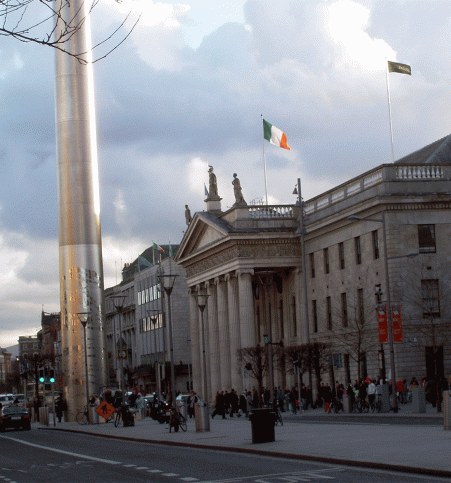 Dublin is the perfect place to come in contact with the history of Ireland’s independence. There are so many significant places, although maybe no one more significant than O’Connell Street. That’s why I asked David if he would guide us down the boulevard and point to us the most important historical spots.
Dublin is the perfect place to come in contact with the history of Ireland’s independence. There are so many significant places, although maybe no one more significant than O’Connell Street. That’s why I asked David if he would guide us down the boulevard and point to us the most important historical spots.
O’Connell Street is undoubtedly the heart of Dublin. The main fashionable shops are here, some important services (like the General Post Office), cinemas, hotels, tourist spots. Today, it is a beautiful, modern and elegant boulevard, but it hasn’t always been like this. The first time I came to Dublin to study English, my English teacher told us students that O’Connell Street was coming back to life then after being quite a dangerous and degraded spot through the 1970s and 1980s.
Through the couple of decades I’ve been frequenting Dublin, I’ve seen O’Connell Street transforming… and still remaining the same, with her historical spots and her patriotic monuments. This seems a constant in O’Connell Street’s life, changing and still remaining the same.
When you come to O’Connell Street from the old city centre, crossing O’Connell Bridge, you won’t miss the first, important monument of the boulevard, the statue of Daniel O’Connell, who stands at the end of the bridge and the head of the street. To me it looks like the most imposing monument on the street (well, if you take out a certain far more recent monument, that is), and rightly so, since I understand Daniel O’Connell to be a giant of Irish history.
O'Connell Street is the heart of Dublin, her living life and memory #Dublin #Ireland
Click To Tweet
David Speaks
Daniel O'Connell Statue
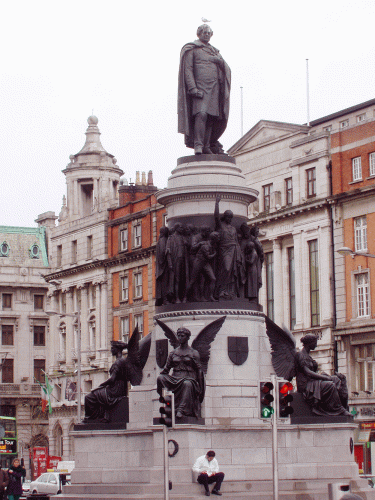 I suppose at over 40-foot high it should be imposing – the man it honours was more than so. O’Connell (1775-1847) was a lawyer who became one of Europe’s most influential politicians. He successfully campaigned for Catholic emancipation – the bid to free Catholics from the prejudicial laws of the day, including the right to sit as MPs in parliament.
I suppose at over 40-foot high it should be imposing – the man it honours was more than so. O’Connell (1775-1847) was a lawyer who became one of Europe’s most influential politicians. He successfully campaigned for Catholic emancipation – the bid to free Catholics from the prejudicial laws of the day, including the right to sit as MPs in parliament.
He also fought for tenants’ rights in Ireland when land was the preserve of wealthy landlords who ran their property like mini-fiefdoms.’
The people loved O’Connell – they called him ‘The Liberator’. He was a great orator, who would hold ‘monster meetings’ across the country which were attended by tens of thousands.
So, this bronze statue on granite from Dublin’s Dalkey quarry, is deservedly imposing. Its sculptor, John Henry Foley, was a very successful artist in his day, but he was a controversial choice for the commission. Although Irish-born, he lived in London, and some resented sending the £10,000 fee abroad when it could be spent in Ireland.
Foley died in 1874, leaving the sculpture unfinished. His assistant, Thomas Brock, would eventually complete it, and it was unveiled in 1882.
It’s built in three sections – O’Connell at the top, staring out across the bridge which is named after him. At the centre is ‘Ireland’ in form of a woman, holding the Act of Emancipation in her hand as she points at O’Connell. There are almost 30 other figures of tradesmen and peasants, artists, doctors and priests. Finally, at the base are four winged victories (courage, patriotism, fidelity and eloquence – traits for which O’Connell was known.
If you look closely at the angels, you’ll see that two of them have bullet holes… honourable wounds incurred during the Easter Rising in 1916.
GPO (General Post Office)

The street that bears O’Connell’s name was once called Sackville Street, and it was here at the GPO – General Post Office – halfway up the grand thoroughfare that 1916’s rebel leaders based their headquarters during the Easter Rising. It was completely gutted that Easter week. If you look at the portico’s pillars you can still see the damage done by all that fighting.
I remember in 1979, when 12 years old, I was raising funds for the boy scouts by shining shoes outside the GPO for a week. One day, a very old man stopped to talk to me. He pointed at the building and said that he had fought in there in 1916.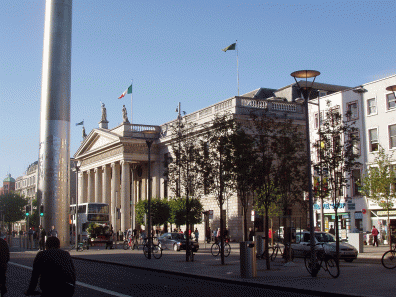 I was mildly interested, half listening to him as I scanned the passing crowds looking for customers for my shoe-shine stand. After a while he shuffled off and was lost among the throng. It galls me to this day that I never took the time to listen properly to what he had to say… what a missed opportunity.
I was mildly interested, half listening to him as I scanned the passing crowds looking for customers for my shoe-shine stand. After a while he shuffled off and was lost among the throng. It galls me to this day that I never took the time to listen properly to what he had to say… what a missed opportunity.
There are two doorways into the GPO on the Princes Street-side of the building. It was while standing at one of these doors in 1916 that rebel leader James Connolly was shot in the ankle. After the surrender and unable to stand, he would be placed in a chair and executed by firing squad.
The rear entrance to the old Irish Independent newspaper offices was on Princes Street and I would always stare at that strip of pavement as I went in to work, wondering exactly where Connolly had stood when he was hit. It’s one of the things I love so much about Dublin – that the history is all around. You can almost hear the crack of rifle fire and smell the cordite from the fighting.
Clerys Department Store

Opposite the GPO is the old Clerys department store. Both it and the surrounding shops were looted during the early stages of the rising. There are many accounts of people ignoring the pleas of the rebels and filling their arms with goods. My then teenage grandmother was one of those looters, and in my parents’ house to this day we have three soup bowls with a Milan stamp on the back that she ‘liberated’ during those seismic events of Easter Week.
Henry Street
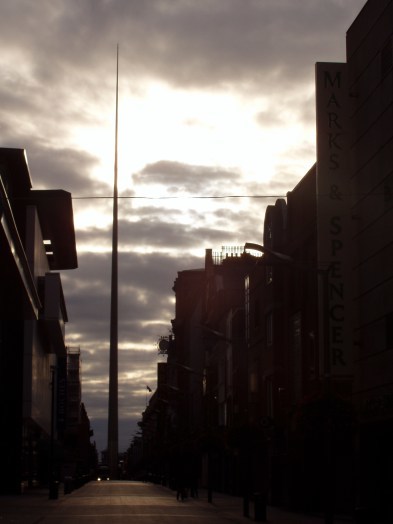
Let’s take a quick walk up Henry Street, on the right side of the GPO. It’s at this side entrance of the building that the rebels made a dash from the burning building, braving British gunfire to reach Moore Street, just a few yards away. They broke into some buildings there and held out for a few more hours until Padraig Pearse eventually formally surrendered to the British commander, General Lowe,
This part of Henry Street was a mountain of rubble from the destruction wrought by the British gun ship Helga, which fired shells into O’Connell Street from the River Liffey. Imagine those rebels scrambling across the ruined street to reach safety…
Michael Collins was one of those who ran from that side entrance of the GPO on that last day of the rising. He and most of the other rebels would be arrested and held at Frongoch internment camp in Wales.
Collins would later be released, reinvigorated and determined to use more guile when it came to fighting the British. He would soon become the most wanted man in the British Empire, yet still went about his daily business under the noses of the Crown forces who so desperately sought him. Collins used offices throughout Dublin to organise his war against the British.
Some of those offices were located here in Henry Street and further up in Mary Street. Collins was always a hair’s breadth from being caught and would sometimes have to escape through attic skylights as British troops mounted raids in the rooms below.
The Spire
 And as we stand here at the start of Henry Street, you can’t help but notice the modern spike of shiny steel that stretches 120-metres tall and stabs the sky, standing like an exclamation mark in the middle of O’Connell Street. When it was erected in 2003
And as we stand here at the start of Henry Street, you can’t help but notice the modern spike of shiny steel that stretches 120-metres tall and stabs the sky, standing like an exclamation mark in the middle of O’Connell Street. When it was erected in 2003  bemused Dubliners gave it various names – the Needle, the Spike, the Stiletto in the Ghetto… but we’ve settled on The Spire – a somewhat deflating name for a rather interesting piece of art.
bemused Dubliners gave it various names – the Needle, the Spike, the Stiletto in the Ghetto… but we’ve settled on The Spire – a somewhat deflating name for a rather interesting piece of art.
It stands almost on the same spot once occupied by Nelson’s Pillar, which was erected in 1809 to commemorate Horatio Nelson’s victory at the Battle of Trafalgar. A symbol of British rule, it was partially destroyed in an explosion orchestrated by Irish republicans on the 50th anniversary of the Rising.
The remaining stump was subsequently removed by the Irish army in what was supposed to be a controlled explosion but which caused more damage to the surrounding area than the original blast.
Charles Stewart Parnell Monument
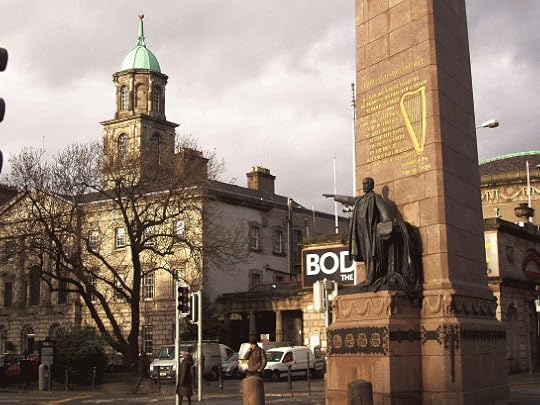 As we pass the burger joints, cinemas and hotels that line the top end of O’Connell Street, we come to another monument, this one to the ‘Uncrowned King of Ireland’, Charles Stewart Parnell.
As we pass the burger joints, cinemas and hotels that line the top end of O’Connell Street, we come to another monument, this one to the ‘Uncrowned King of Ireland’, Charles Stewart Parnell.
It’s a towering tribute to his life as a nationalist politician and the leader of the Irish Parliamentary Party, which fought for Irish nationalism through constitutional means.
Created by Irish-born sculptor Augustus Saint-Gaudens, the bronze statue of Parnell stands at the base of a granite pillar which rises 90 metres high.
There is a picture of British troops gathered round the monument after the Rising. They’re laughing and holding the captured rebel flag that had flown over the GPO. I’ve often wondered what Parnell would have made of that scene had he looked down from his plinth.
It’s ironic that he turned up for the unveiling of the O’Connell monument in 1882 at the other end of the street. Nine years later he would be dead, his life cut short by illness. O’Connell and Parnell, two giants of Irish history, now bookend Dublin’s greatest boulevard – a street that has seen so much and which can teach us all, if we would only take the time to look.
David, I’d listen to you the entire day, I mean it. And guys, if you like what you’ve read so far, do visit David’s blog.
If you fancy to learn contemporary Irish history while also enjoying a good story, David has written a series of three books (the fourth is soon to be published), set during Ireland’s War of Independence and the Civil War. He’s also written a modern crime novel, set in Dublin.
Here’s what I thought of the first book, Tan, but you bet I’ll keep you posted about what I think about the others as well!
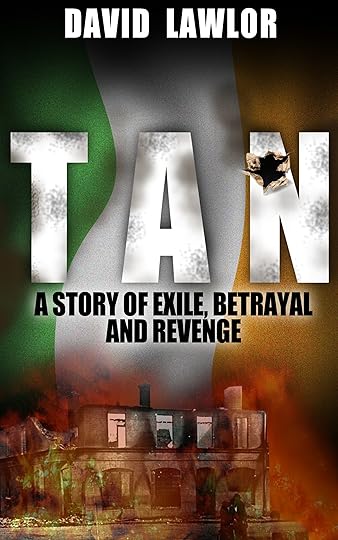
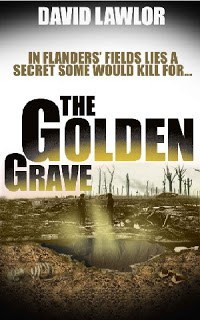
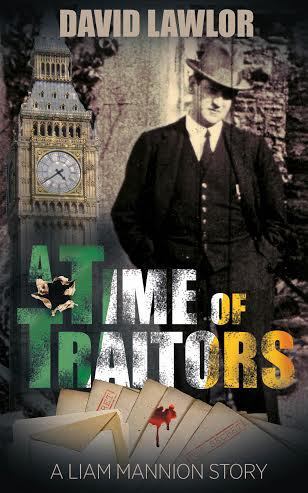
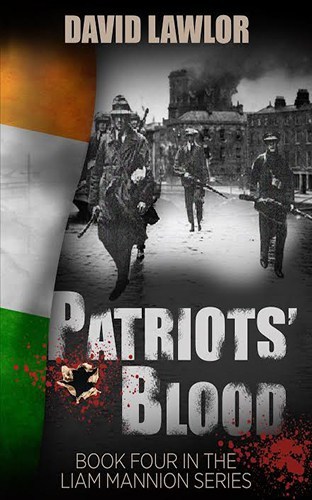
Amazon | Kobo | Barnes&Nobles | iBooks | Smashwords
DAVID SPEAKS ABOUT HIMSELF
I’m no historian, but I do like the subject (I even managed to get an Honours degree in it after much sweat and tears). I also like to write historical fiction. The idea is to collate interesting snippets from the past, things which spark an interest and maybe even a story or  two. I’ve worked as a journalist in national newspapers for 26 years. I have written three novels following my character Liam Mannion – Tan, set during the Irish War of Independence, The Golden Grave, which is set in the old battlefields of World War One and A Time of Traitors, which follows Liam as he tries to unmask a traitor within the ranks of the IRA.
two. I’ve worked as a journalist in national newspapers for 26 years. I have written three novels following my character Liam Mannion – Tan, set during the Irish War of Independence, The Golden Grave, which is set in the old battlefields of World War One and A Time of Traitors, which follows Liam as he tries to unmask a traitor within the ranks of the IRA.
In the course of my research, I have come across what I think are interesting facts, which you might like to read. Please feel free to contribute some of your own information, and let’s finally get the bit players of history that bit of recognition they truly deserve.
– David Lawlor
CONNETC WITH DAVID
Twitter | Goodreads | History in the Making
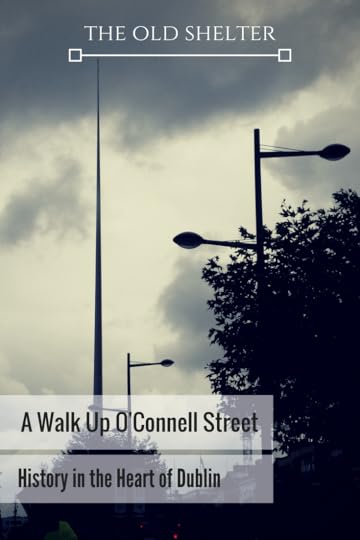
The post A Walk Up O’Connell Street – History in the Heart of Dublin appeared first on The Old Shelter.
May 26, 2017
Killer in Red – A man walks into a bar and something noir happens
This is a short film produced by Campari as a commercial (though certainly a very stylish one) for its cocktail Killer in Red. The film imagines where the cocktail comes from and what the story behind its name is.
The script was written by – who also directed the short – based on a story by J. Walter Thompson and is starred by Clive Owen, who appears as the main character in both timelines.
The frame timeline is set in our days. A man walks into a bar and orders a Killer in Red as he waits for a woman. Here, he gets the story of the drink, which originated back in the 1980s.
In the main timeline, set in the 1980s, Owen is the bartender who invented the cocktail… and who also has to offer a very dark story to go with it.
More than 170 actors were involved in this project, which beautifully recreates the spirit of the 1980s (it is certainly reminiscent of tv serials we kids of that time know very well) and uses dresses and customs original of the era.
It’s a good one, in my opinion. It is of course a sport for Campari (although very sophisticated) but it also stands nicely on its own as a short film. The story is strong and interesting, I was entertained from beginning to end. I really like the 1980s noir style, which is beautifully recreated. Clive Owen skillfully created a catalyst for both the timelines.
I enjoyed it very much.
—————————————————————-
RESOURCES
Campari Red Diaris – Killer in Red
Fast Company – Clive Owen Stars In “Killer In Red,” A Stylish Noir Film–That’s Also A Campari Ad
Campari Group – The Story Behind Campary Red Diaries 2017 & Short Movie Killer in Red
Bad Taste – Ecco il video di Paolo Sorrentino con Clive Owen
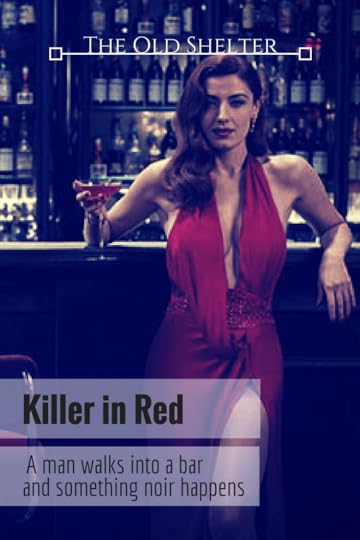
The post Killer in Red – A man walks into a bar and something noir happens appeared first on The Old Shelter.
May 23, 2017
Who (Ayn Rand)
– Ayn Rand
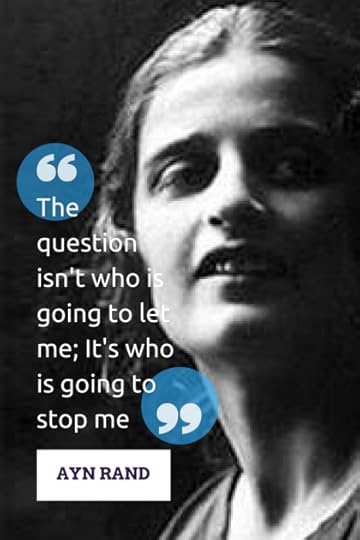
The post Who (Ayn Rand) appeared first on The Old Shelter.
May 18, 2017
Thursday Quotables – A Ring of Truth
“What happened?” Henrietta asked when they were back in the car together heading down California toward the Von Harmon’s apartment. Clive had been contemplating how much of Eugene’s story to share with her, and he still wasn’t sure how forthcoming he should be.
“I don’t think he did it,” Clive said finally.
Henrietta breathed a sigh of relief. “What happened then?”
“I’m pretty sure this Fr. Finnegan set him up. I think he planted the candlesticks on him. I need to pay him a little visit tomorrow.”
“But why would he do that? That doesn’t make sense! Eugene’s a favorite of him.”
Clive let that comment sit for a few moments as he considered to say next. He wanted to be honest with her, but how much should he reveal? It was a terribly inappropriate subject, one he didn’t necessarily want to broach, but he saw no other way around it if Henrietta were to really understand the gravity of the situation and its many gray areas. Perhaps it would be for the best, really, if she knew. “Henrietta…” he began unsteadily. “I’m pretty sure Eugene’s a deviant… a homosexual, that is.”
He looked over at her, but she was just staring straight ahead at the road. He was completely unprepared, then, when she said quietly, “Yes, I thought he might be.”
Because this series by Michelle Cox is called “Henrietta and Inspector Howard”, I’ll admit I was expecting something a bit different. More of a cosy mystery, where the mystery had a central role, if in a ‘cosy’ way.
Turned out, this is a romance with a mystery side thread, which was disappointing for me – which is entirely me, not a fault of the story.
Even if I’m not at all into romances, this was nonetheless a good one. The characters are well rounded and sympathetic and don’t normally go into the kind of unreasonable angst that I really don’t like in romances. Henrietta and Clive have some very serious matters to consider and overcome and they do it always in a credible way.
Yes, they are classic romance tropes (she’s young, daring and poor, he’s experienced, brooding and very rich), but they are handled in such a way that they feels real and convincing. I also liked that many threads are interwoven in the story. Henrietta and Clive’s love story is central to the plot, but there are side threads (the mystery one, but also the thread concerning Henrietta’s mother, and the one about her brother, the thread concerning Helen’s past) that are strongly set. Most of these side threads don’t find a resolution at the end (this is, indeed, and ongoing series) but they weave with the central story rather than proceed alongside, so that they feel part of it. I was not disappointed when they remained opened in the end, it actually felt quite natural.
The mystery thread turned out to be quite lame, I’m afraid, which was disappointing for me. But the romance is very strong, so if you are the kind of the romance reader, I’m sure you’ll appreciate this story a lot.
—————————————————
In post is part of the Thursday Quotables meme. If you want to discover more about this meme and maybe take part in it, head over to Bookshelf Fantasies
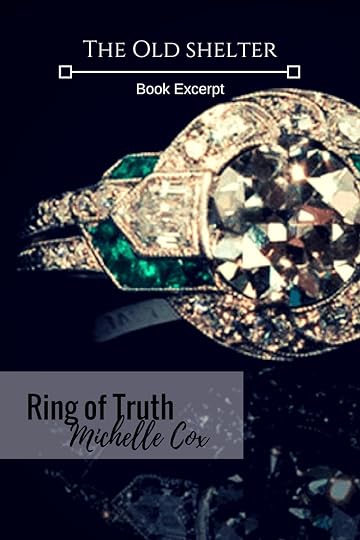
The post Thursday Quotables – A Ring of Truth appeared first on The Old Shelter.




